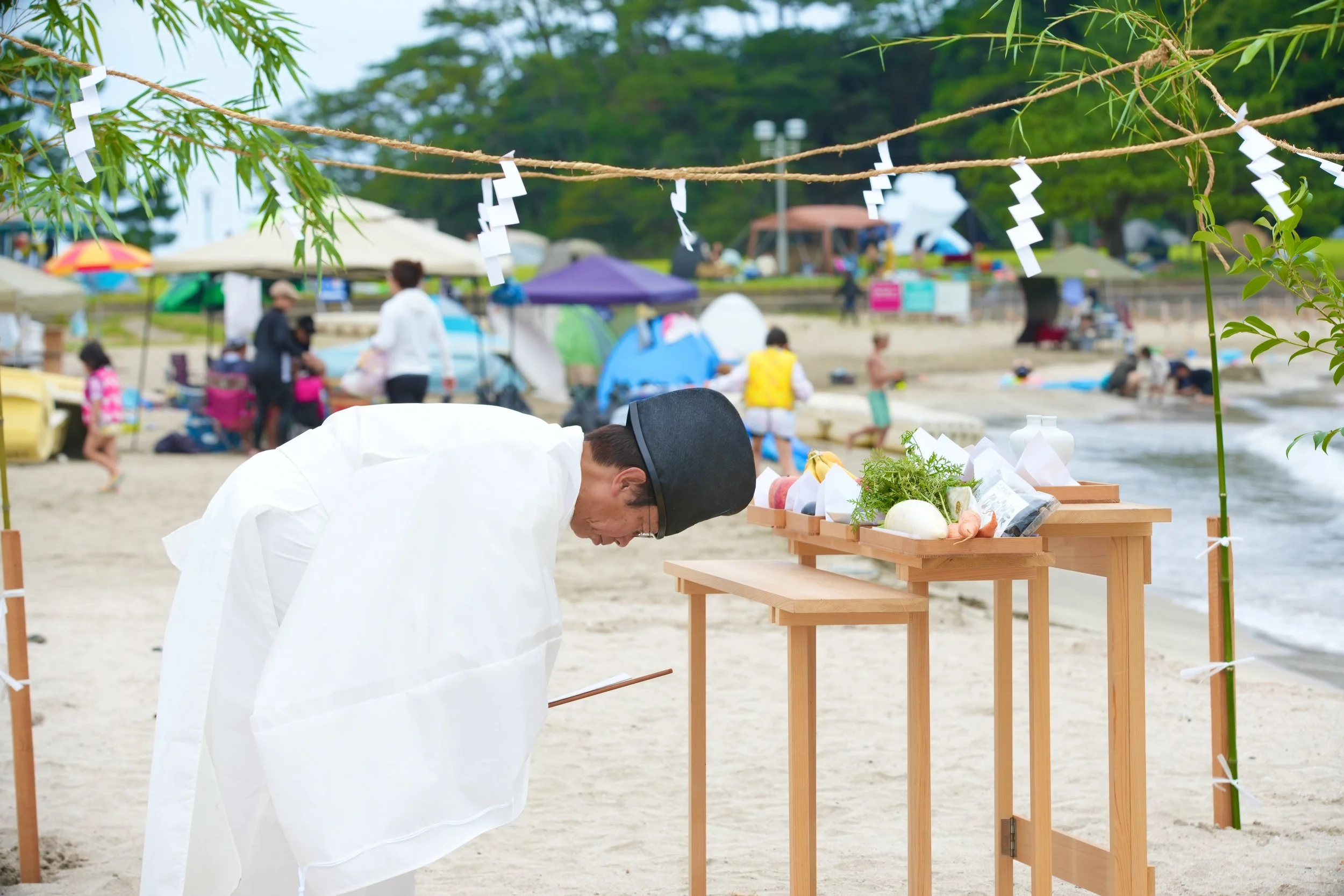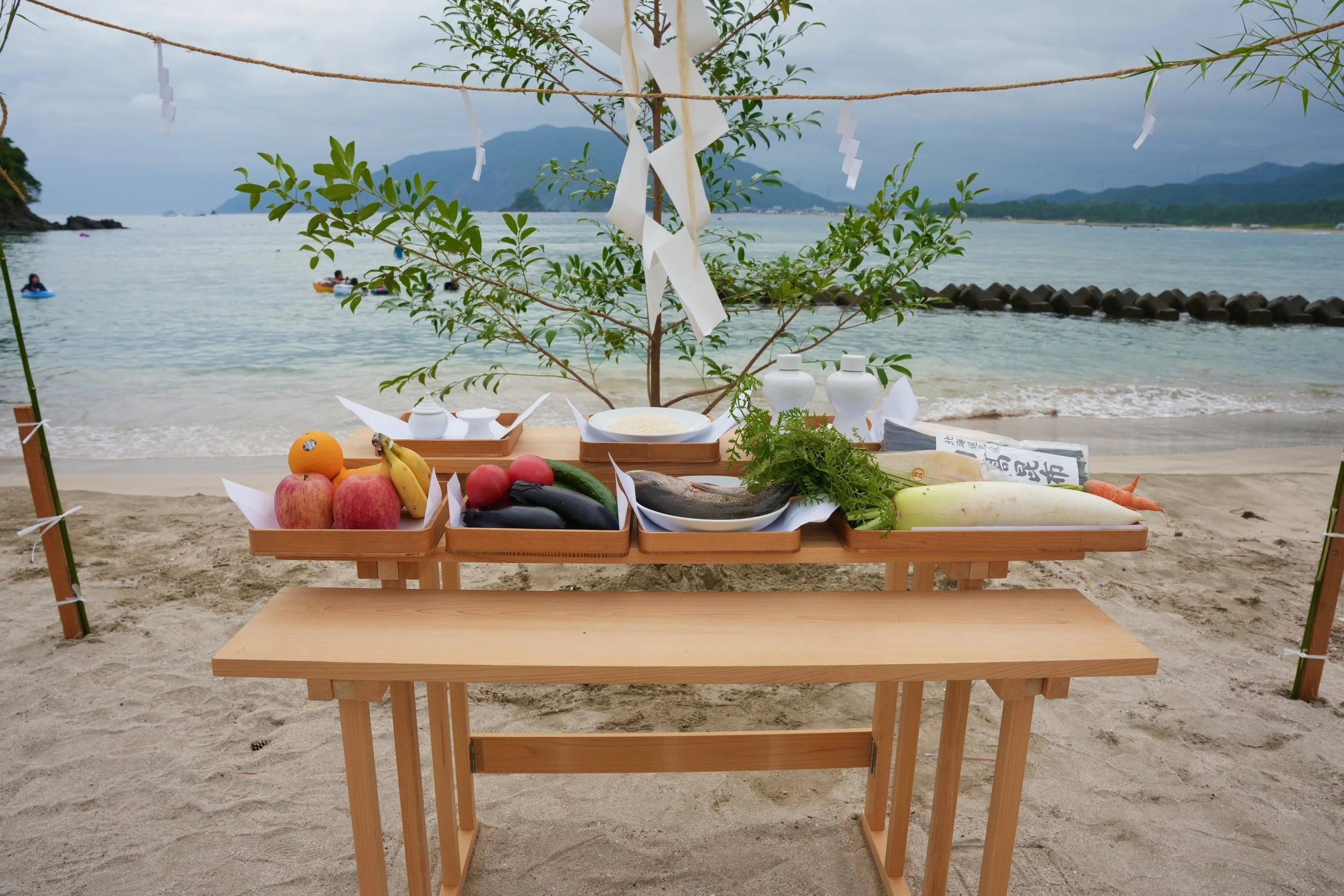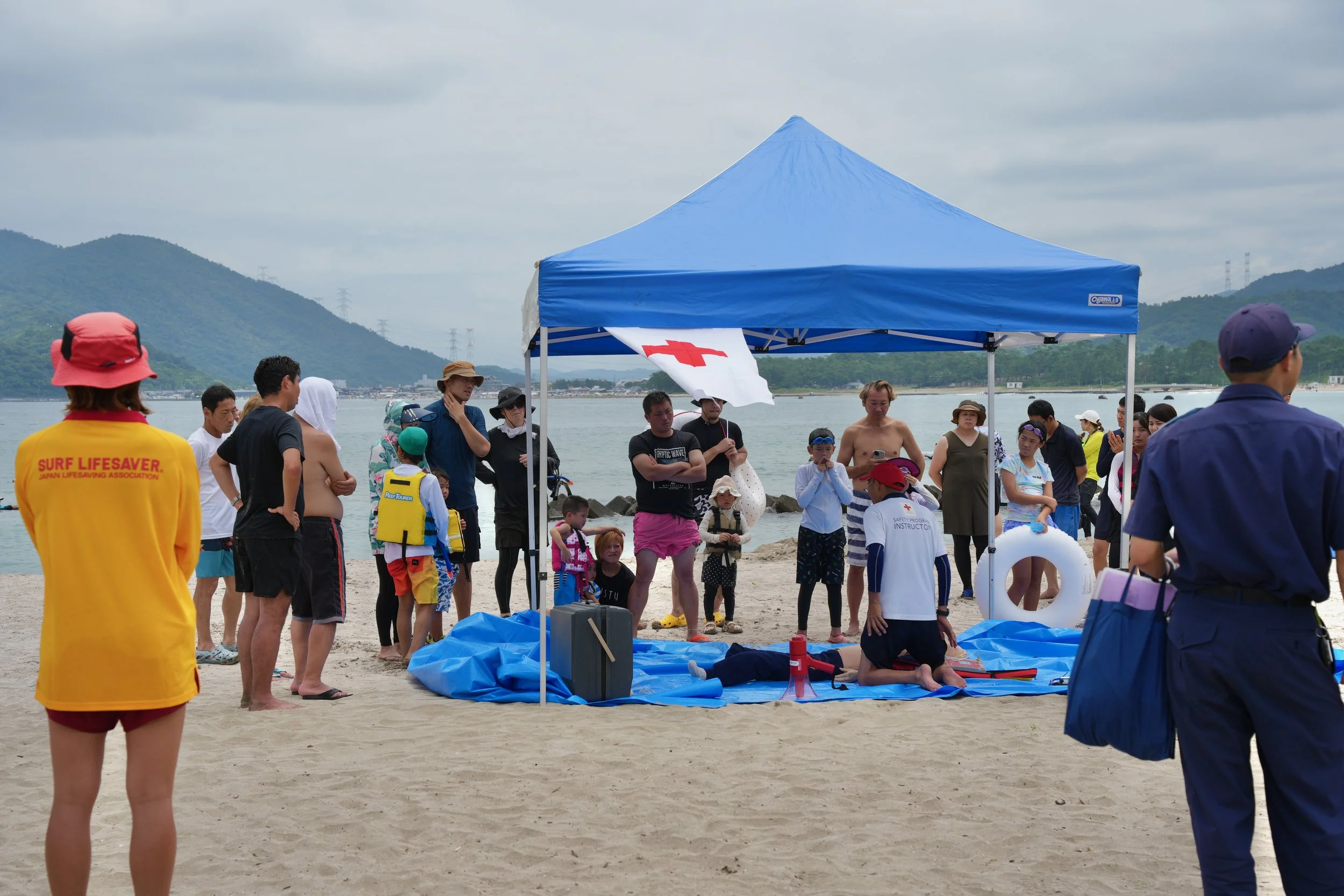When Japan Opens the Sea
The head priest of a local shrine conducts the opening of the ocean ceremony, known as umi-biraki in Japanese.
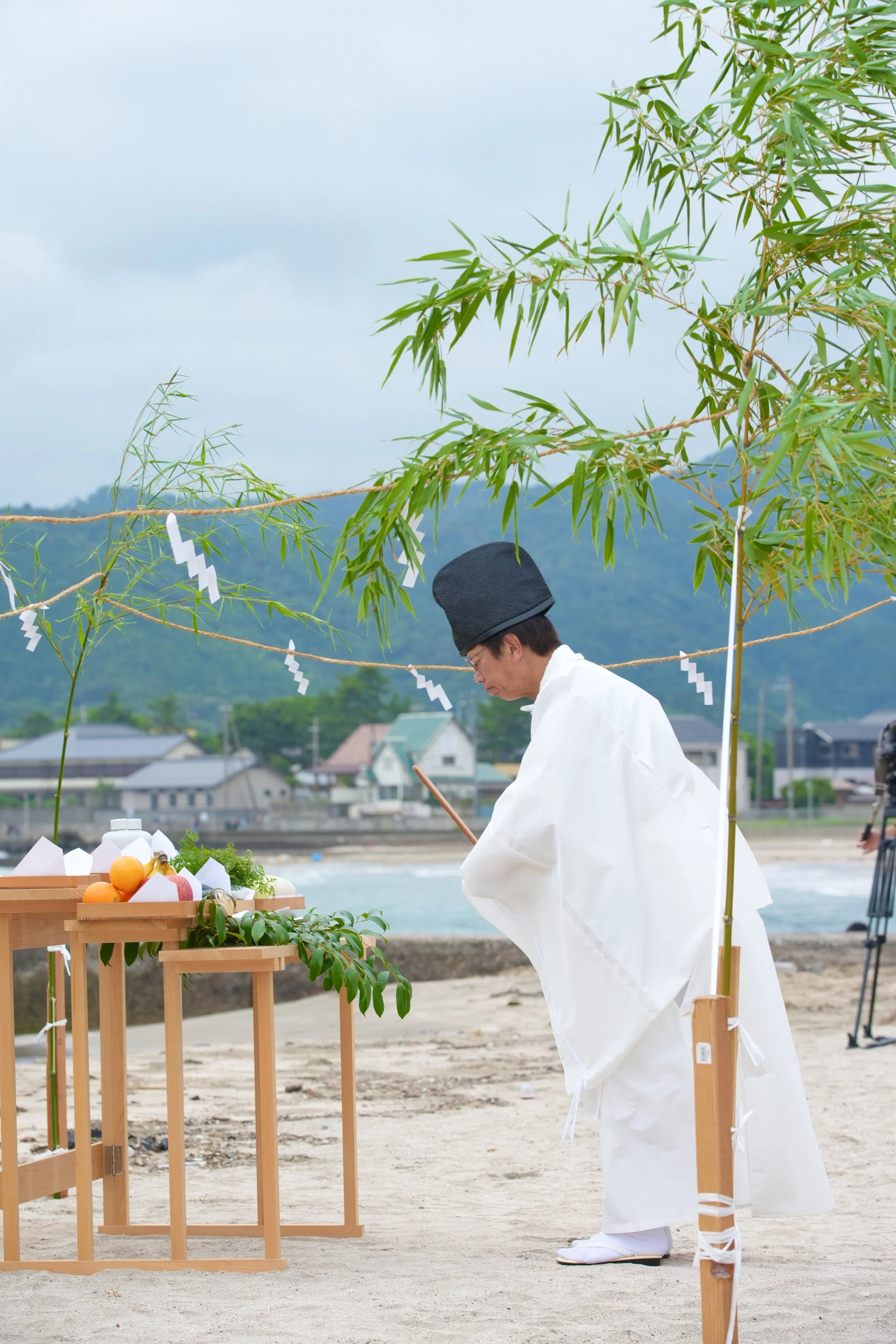
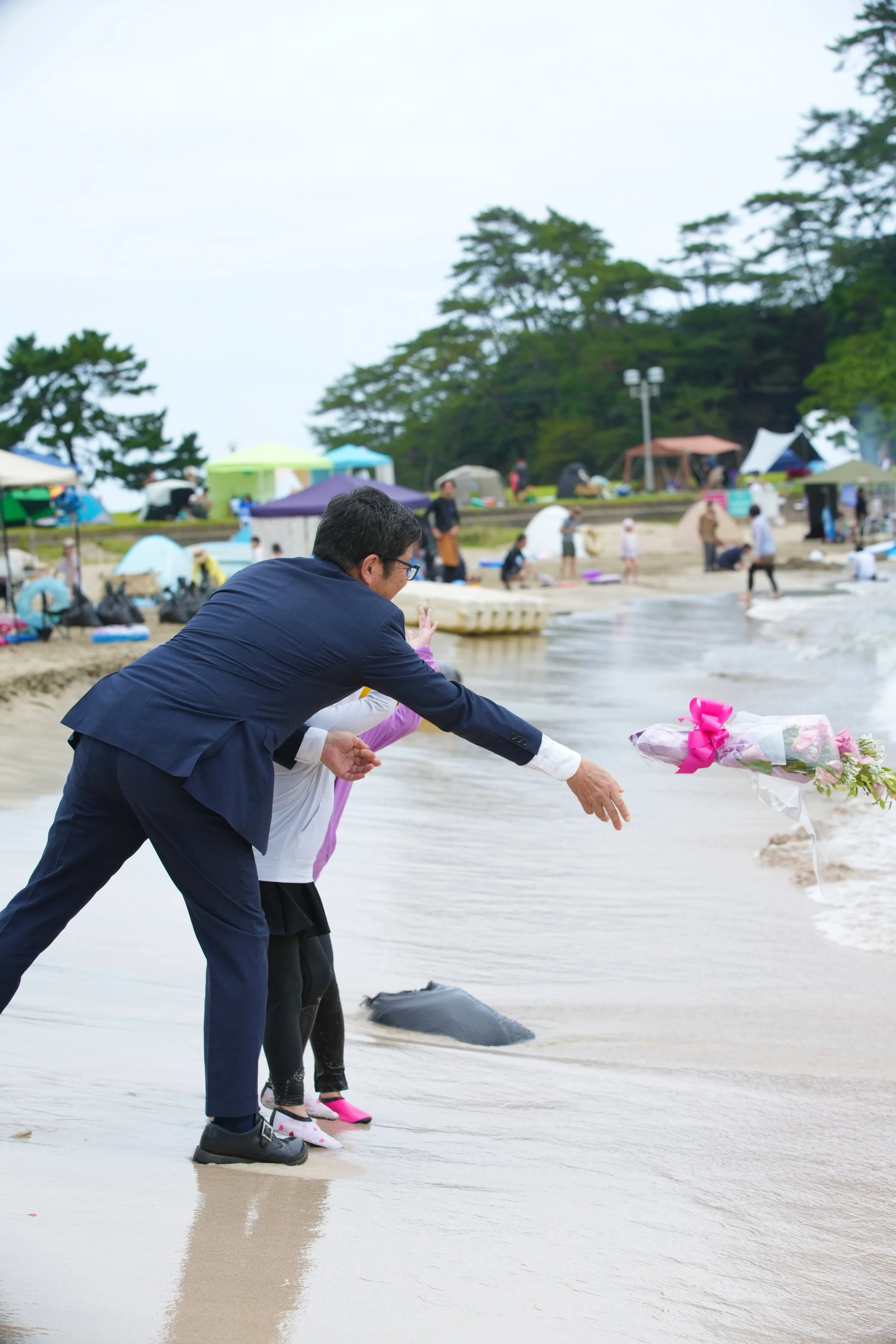



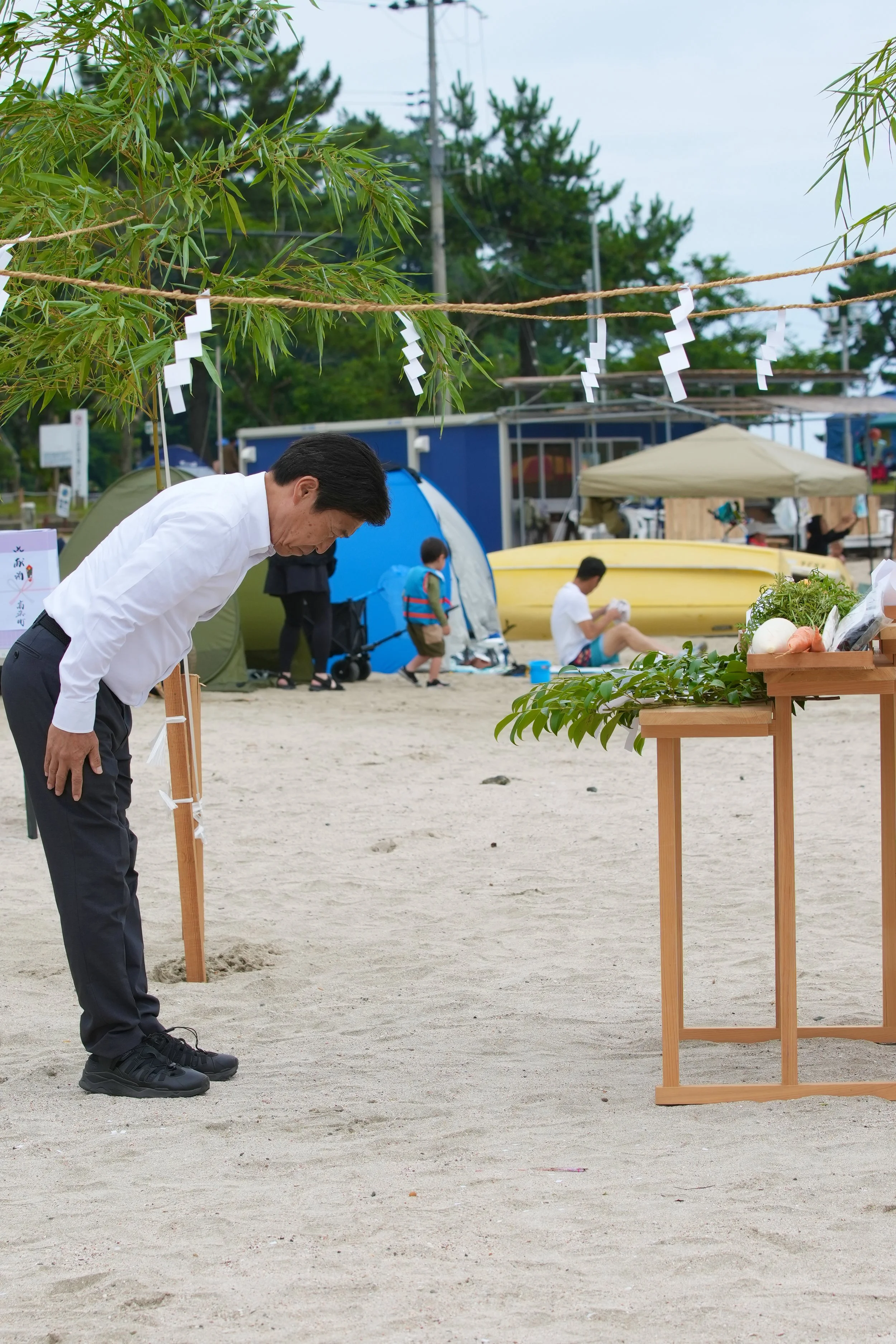

Historically, Japan’s relationship with the sea has always been one of both gratitude and caution. The ocean provides food, livelihood, and a connection to other lands — yet its power is both immense and unpredictable. Fishermen in ancient times relied on rituals to appease the deities of the sea (umi no kamisama), seeking calm waters and plentiful catches.
古くから、日本人にとって海は、恵みをもたらす存在であると同時に、常に畏れと慎重さを必要とする相手でもありました。豊かな食や暮らしの糧を与えてくれる海は、遠い土地と人々をつなぐ道でもありますが、その力は計り知れず、時に人の想像を超えて荒れ狂います。太古の昔、漁師たちは海の神様(海の神)を鎮め、穏やかな海と豊漁を祈るために、さまざまな祈りや儀式を欠かしませんでした。
The earliest forms of the opening of the beach umi-biraki ceremony were held to purify the shoreline, offer thanks, and pray for protection from storms, strong currents, and other dangers. Communities would gather on the sand while a Shinto priest conducted a ritual purification (お祓い, oharai), making offerings of sake, rice, salt, and sometimes fish, to honor the spirits that dwell in the waves.
海開きの起源とされる最初の形は、海岸を清め、海の恵みへの感謝を捧げるとともに、嵐や潮の流れなどの災いから身を守ってもらうことを願う儀式でした。地域の人々は砂浜に集い、神主が祝詞をあげてお祓いを行い、波間に宿る神々に向けて酒や米、塩、時には魚を供えました。こうして人々は、海とともに生きるための祈りを重ねてきたのです。
Offerings of fish, fruits, vegetables and sake are presented to the deities of the sea

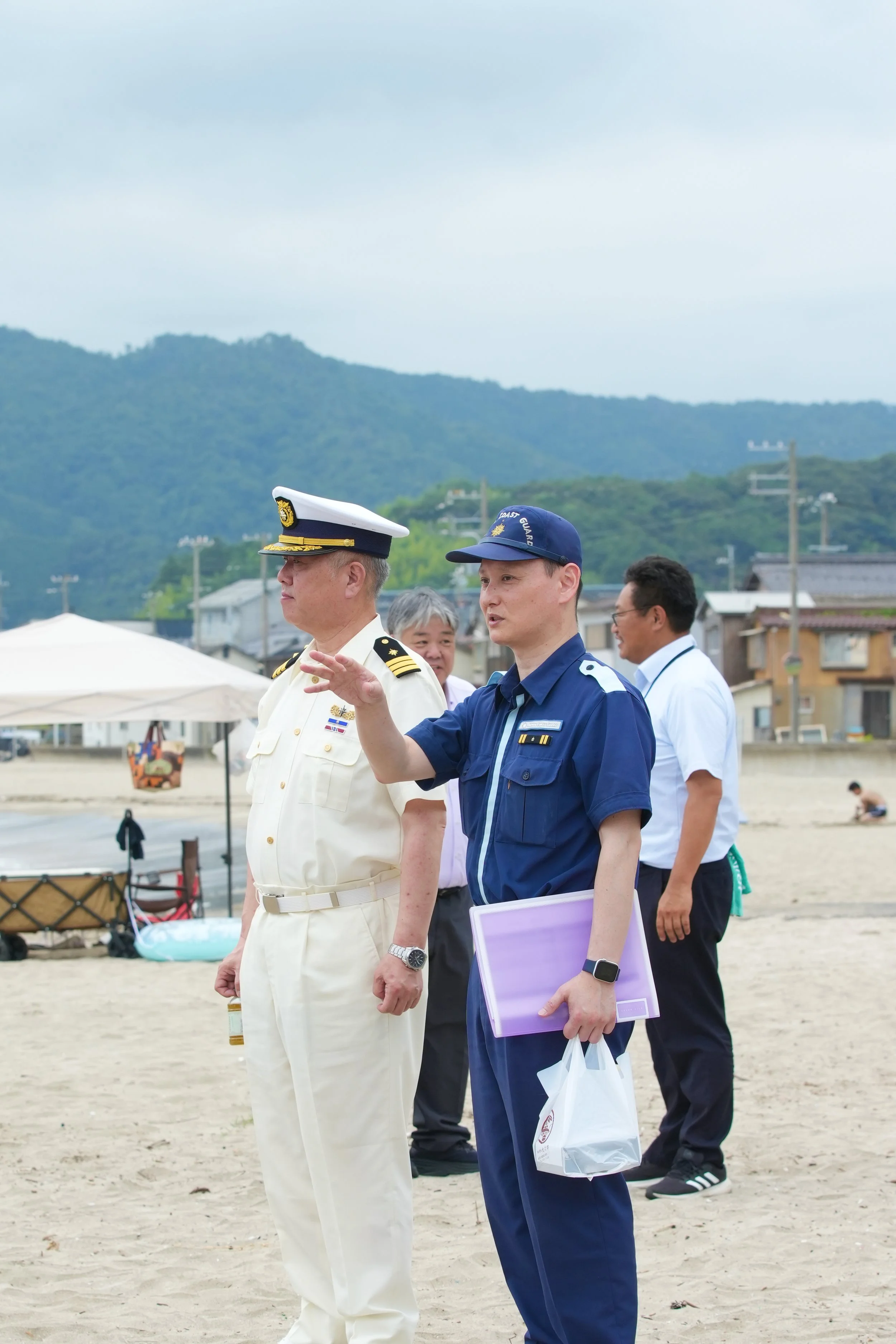


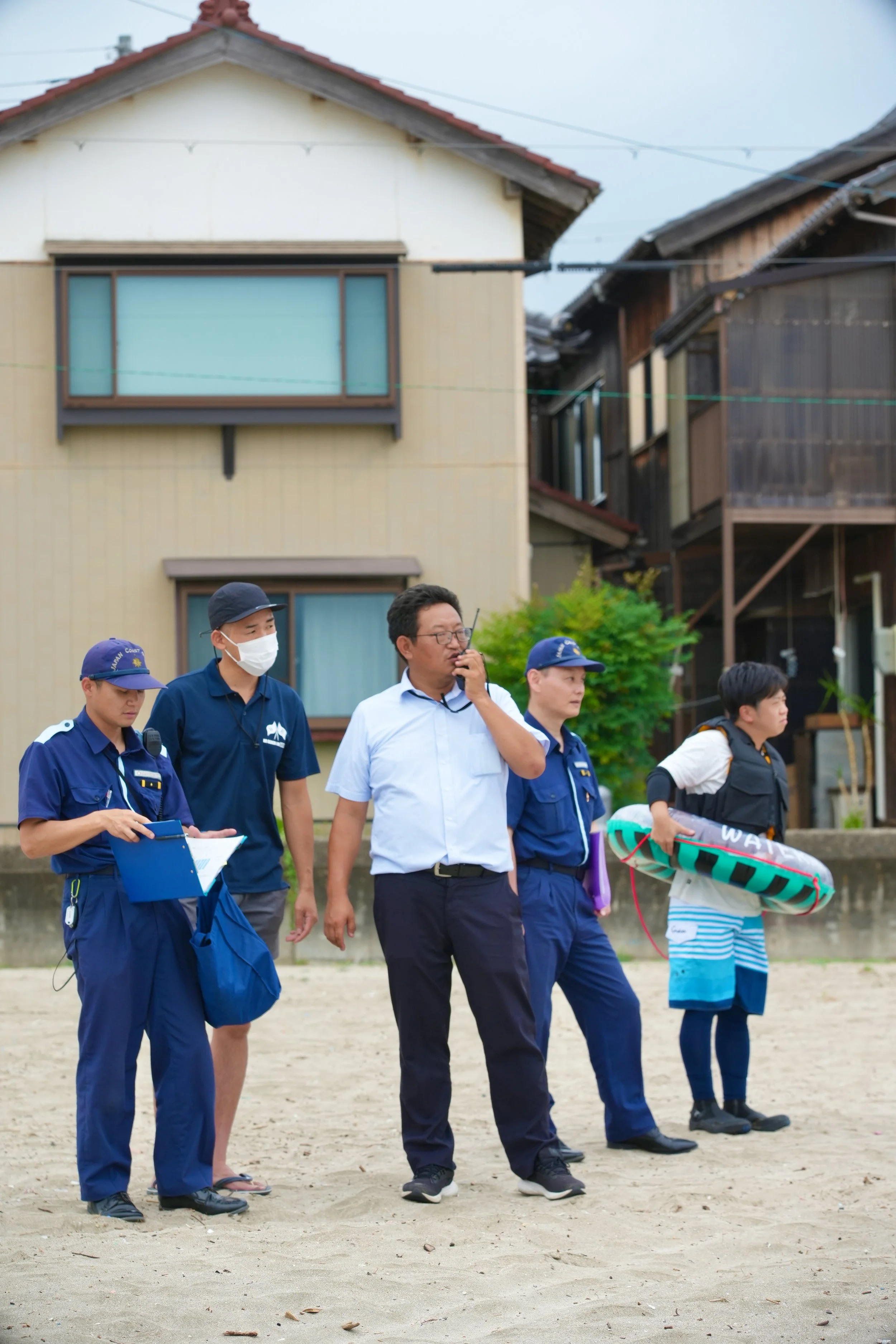
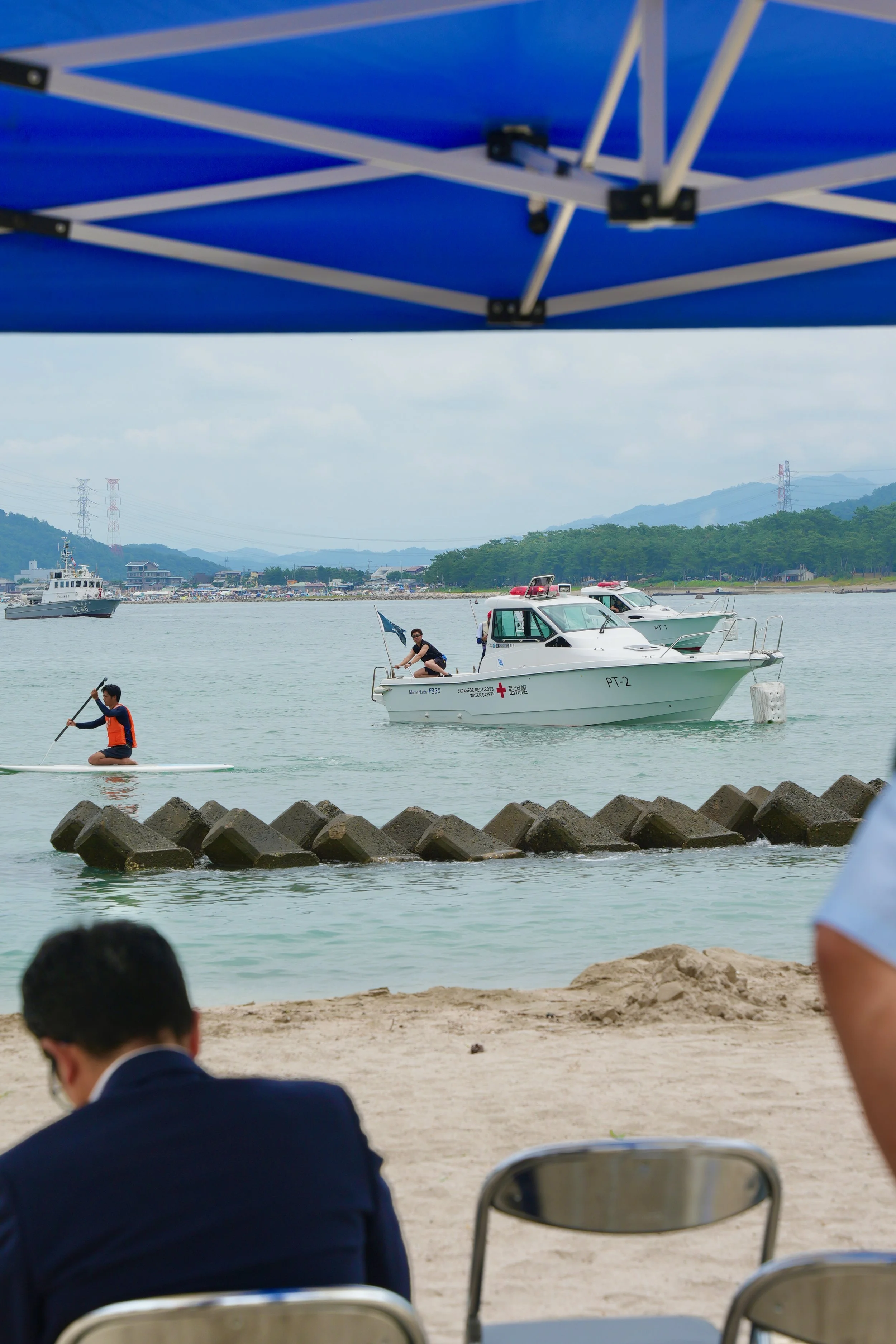
In modern Japan, the umi-biraki has evolved to meet contemporary life. While fewer communities depend on fishing alone, beaches are now shared spaces for swimmers, surfers, and sunseekers. Local governments and beach patrols host these ceremonies to mark the official start of the swimming season — often in early July, though the timing varies by region.
現代の日本では、海開きのかたちは時代とともに姿を変えてきました。漁業だけに生計を頼る地域は減った一方で、海辺は今や泳ぐ人、サーファー、日差しを楽しむ人々が集う、みんなの憩いの場となっています。多くの地域では、夏の海水浴シーズンの幕開けを告げるため、地元自治体やライフセーバーたちが中心となって海開きの神事を行います。地域によって時期はさまざまですが、例年7月上旬に行われることが多いです。
A local water safety instructor teaches beachgoers how to perform basic CPR.
In a world where traditions can easily slip away, this ceremony endures as a living link to the beliefs and practices that shaped Japan’s coastal communities. It reminds us that the ocean is not simply a backdrop for beach selfies or water sports — it can also be a place of wonder, danger, and deep cultural meaning.
伝統がいつしか薄れてしまいがちな現代においても、この海開きの儀式は、海辺の暮らしを支えてきた信仰や祈りの心を今に伝える生きたつながりとして受け継がれています。海はただのビーチフォトの背景やマリンスポーツの舞台ではなく、時に人を魅了し、時に危険をもたらす、深い文化的意味を宿す場所であることを、私たちに改めて思い出させてくれるのです。
